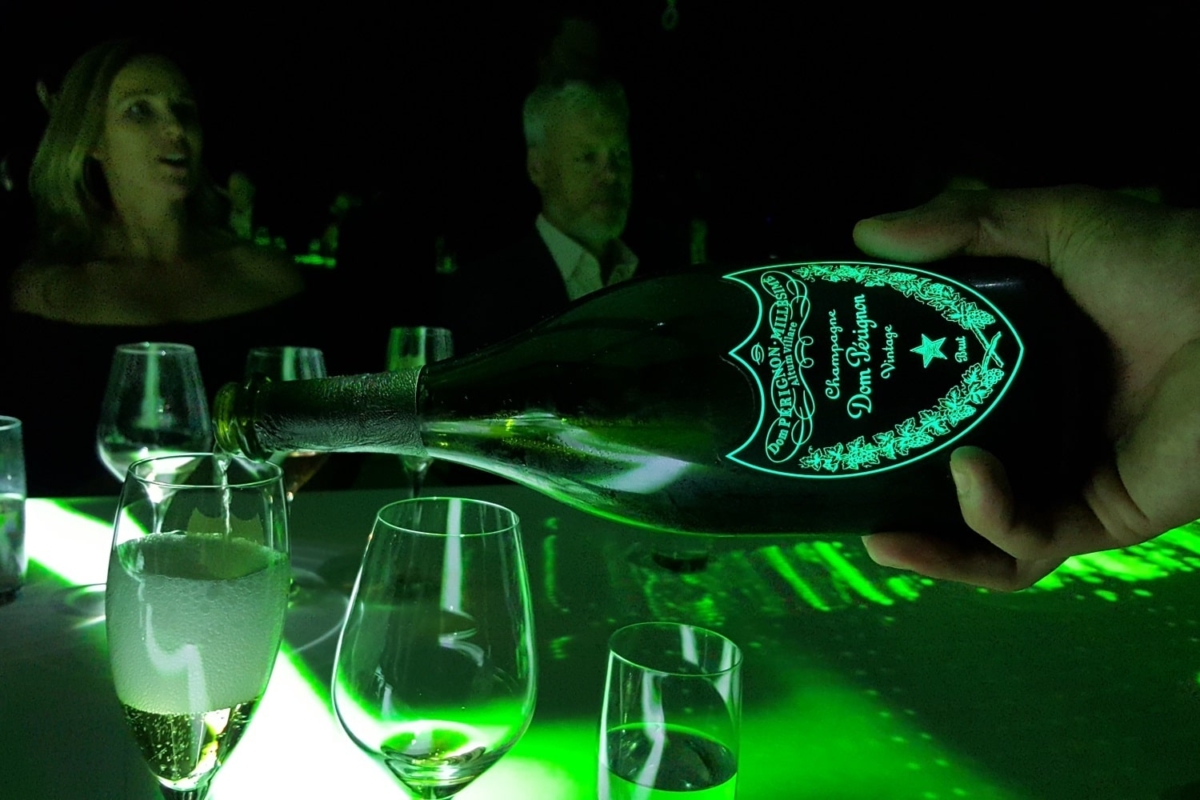
Each bottle of Dom Pérignon is aged in the cellar for at least nine years, as a result of which the wine achieves a perfect balance and harmony. Dom Pérignon is always based on Chardonnay and Pinot Noir grapes, the proportions of which are tweaked to perfection, thus the taste may vary between vintages. As a general rule, they produce a maximum of six vintages per decade. The cellar master and Dom Pérignon oenologists taste the wines regularly to monitor their development and pinpoint the best time for clarification. Vincent Chaperon, the current cellar master, only makes champagne from wines that have aged for more than 20 years. The manufacturer has not released how many bottles of champagne they produce in each vintage, but it is estimated to be at least 5 million. Therefore, champagne is only produced in years with good yields of grapes or when the cellar master believes that he can do something exceptional with the difficult harvest. Only the best grapes are used for vintage champagne production. As of 1947, Dom Pérignon has been produced completely separately. Up until 1943, Dom Pérignon was produced from the regular Moët & Chandon Champagne but it was simply transferred to special 18th century-style bottles. Of those, billionaire James Duke bought 100 bottles for himself. A year later, 100 boxes of the first 1921 vintage were shipped to New York, this time displaying the Dom Pérignon name. The champagne immediately gained attention – the customers wanted more of it. To commemorate their centenary, the company gave two bottles of champagne to each of their 150 best customers, and, while this was Dom Pérignon champagne, the name on the label was different. The success story of Dom Pérignon begins in 1935 when 300 bottles of the 1926 vintage were sold to Simon Bros. Dom Pérignon Champagne was originally produced by Champagne Mercier who sold the brand to Moët in 1927. Moreover, he was the first to use cork instead of tree bark plugs to seal bottles, and to store sparkling wine in thicker glass bottles to prevent them from exploding.

In addition, he developed a method that would allow white wine to be made from black grapes. He was a true pioneer in the wine world, as he was the first to start blending the juices of different grape varieties to create a balanced wine in 1670. Believing that hard work would bring him closer to God, he made it his mission in life to create the best wine in the world. Despite that, the wine industry still owes a great deal to him and his discoveries.ĭom Pérignon lived and worked as a cellar master at the Benedictine abbey in Hautvillers, France. This, however, is not true – the Champagne method was developed gradually almost a century after the death of Dom Pérignon. The brand is named after Dom Pérignon, a Benedictine monk who is often credited with inventing the Champagne method for making sparkling wine. ORDER NOTES: You may use up to 3 lines, with 15 characters per line (including spaces).Dom Pérignon is one of the most prestigious Champagne brands that only produces vintage Champagne. NOTE:When ordering, please clearly specify your personalized message for engraving in the section marked: Dom Perignon likes playful experiences: culinary art, textures, and matters.Įngrave your personal message, logo or crest directly into the glass bottle.ĭELIVERYStandard delivery on engraved items is 7 to 10 business days from our scheduled Engraving Events. Spices enhance and accentuate effervescence and densify the wine. The wine enjoys duality: warmth & freshness, meat & iodine pairings, cooked & raw. Its persistence is mainly aromatic, grey, smoky and highly promising. The vintage's characteristic acidity is remarkably well integrated.

Its slender, minimalist, pure, toned, athletic character is now also expressed with warmth. There is complete balance between the nose and the palate. The final aromas offered by the wine are starting to show spicy, woody and roasted notes.Īfter a long period of reluctance, the wine is finally opening up. The overall effect is enhanced by the freshness of aniseed and crushed mint. The opening bouquet is complex and luminous, a mingling of white flowers, citrus and stone fruit.


 0 kommentar(er)
0 kommentar(er)
